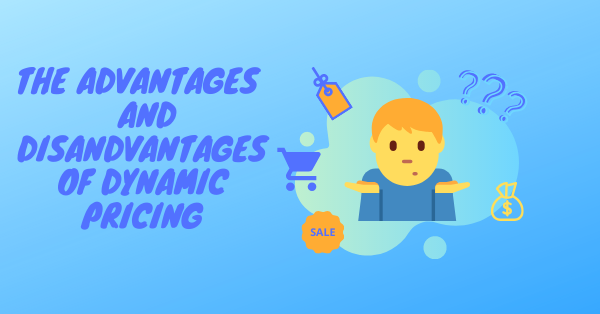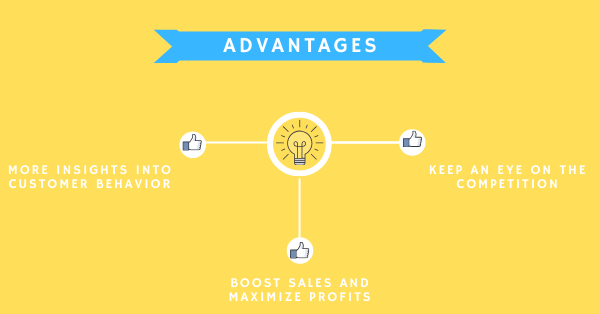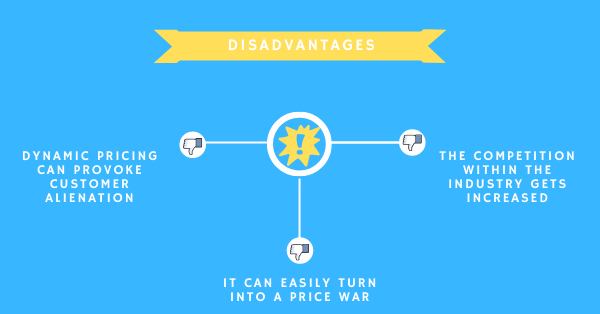Dynamic Pricing Method: Advantages and Disadvantages
The dynamic pricing method has great advantages, but what about its disadvantages? Can the use of it actually endanger your business?
Being able to set the right price at any time sounds great, but it’s impossible that everything is this easy, right?
In this post, we’re going to shed more light on this topic.

In the age of “big data” and multi-channel shopping options, retailers and manufacturers can count on a massive amount of available information to use for creating the right pricing strategy. One of the frequently used ones is dynamic pricing. The dynamic pricing method, or repricing, is a strategy consisting of price changes. They are based on your own product costs as well as your competitor’s prices. The purpose isn’t to put the lowest or the highest prices on the market, but instead to find the optimum price at any time.
So, let’s dive into this topic by explaining some of the main advantages of the dynamic pricing method.
1. Keeping an eye on your competition
When you decide to implement a dynamic pricing strategy, by default you need to start thinking about your competitors. Who are they, what prices do they use, how often they are changing them, and why? Basically, the more patterns you’re able to spot, the better. This tactic will allow you to be on top of all key market trends.
It’s clear that having an insight into your competition’s actions is an advantage. But how can you get those insights?
If you have a team that’s able to track all the price changes manually, that would be ideal. But, that’s very unlikely to happen. You’ll probably need some external help. There are many price monitoring software, such as Price2Spy, that can do this for you. Using repricing without the help of some eCommerce price comparison tool is a bad decision.
Why is that the case?
The best results of using a dynamic pricing method will be seen if the strategy is used in an automated way throughout the whole year. You’ll admit, this would be impossible to do manually. Even worse, it could lead you to wrong conclusions and decisions.
2. Gathering more insights into customer behaviors
The dynamic pricing method won’t only help you with knowing your competition better. It will help you to become more aware of who your customers are and how they purchase. With it, the demand curve for each customer becomes easier to calculate. This curve shows you the minimum and the maximum price that a customer is willing to pay for a product/service. Understanding the relationship between the price and demanded quantity is the first and foremost step in building a model of consumer behavior.
Dynamic pricing software has developed many advanced ways of obtaining a lot of data from this curve. For instance, you can find out what device is being used for shopping purposes.

3. Boosting sales and maximizing profits
When you have a better understanding of your customer behavior you can create more accurate shopping patterns. You’ll get more familiar with your customers’ shopping actions. What do they tend to look for? On which devices? And most importantly, how does the product price (set by you and your competitors as well) affect their buying decision?
How does this work?
Well, if competitors are selling products/services at a higher price, this can be seen as your opportunity to maximize your profits by using a dynamic pricing method. Let’s make this more understandable over an example. Say a customer is looking to buy a pen. Your competitors are selling them for $3 each, while you are selling them for $1.25. The well-set dynamic pricing strategy will enable you to sell the item for $2.25. In other words, the customer will get the impression that they’ve actually found a cheaper product. In other words, you’ll be their purchasing option.
But, using dynamic pricing can have some downsides as well. Let’s discuss some of the most important ones.
1. Dynamic pricing method can provoke customer alienation
No one likes to feel like they’ve been cheated on. However, that’s exactly what happens when the customers find out that someone else is selling the product that they’ve already bought at a lower price. They are left with the feeling that they’ve overpaid for something. Even worse, there is not much that they can do about it. Making this pricing decision was good in terms of profit. But, you do run the risk of alienating your customers if they find out that there was a more favorable option on the market. Customers become dissatisfied and they tend to leave bad reviews.
Additionally, the final aim for every eCommerce store is to create a long-lasting relationship with its customers and turn them into loyal ones. Trust leads to repetitive purchases and customers who remain faithful to a brand. Therefore, alienating your customers can lead you to a very slippery field and endanger the whole business.

2. The competition within the industry gets increased
Building a customer’s trust can take very long, but it also can be destroyed in a matter of seconds. No matter how much they love your brand, if they feel that they’ve been tricked, you’ll see them turning their back to you. When this happens, it’s always followed by increased competition in the whole industry. More companies then tend to take your place, and eventually to take over the unsatisfied customers.
Competition isn’t necessarily a bad thing – it pushes you to always try to do the best you can, but it can also turn into a serious price war.
3. It can easily turn into a price war
Price is often a weapon of choice when it comes to the battle for customer retention. There is nothing wrong with creating a low-price appeal. However, this can very easily escalate into a true price war. Price wars can create economically unfavorable circumstances from which no one comes out as a winner. Moreover, the whole industry loses, and the participants usually end up in a worse position than they were.
How do the price wars work? Basically, they start off with one company lowering its prices, which causes the other business to lower theirs even further. This process continues as a chain reaction until one of the competitors reaches a point where they can’t sustain themselves at such a low price.
However, companies can find themselves in this situation due to the wrong understanding and usage of this pricing strategy. They usually see price as something that’s possible to change easily and quickly, and then, if needed, to be reversed as well. Thus, the problem isn’t in the dynamic pricing method itself, but more in using it in a wrong and unprepared way.
Good preparation is everything
Dynamic pricing is a true example of the fact that nothing is black or white. If it’s implemented carefully and well-planned, it can be extremely beneficial. But, if you take it lightly and start making price changes randomly it’s inevitable that you’ll take your business on a very dangerous road. When used properly, it can benefit everyone, both companies, and customers. However, as you can see, customers can unmistakably recognize fraud and turn their back on you instantly. Therefore, the dynamic pricing method is a double edge sword and requires careful implementation.
If you think that now is the right time to upgrade your business strategy by using a dynamic pricing method, make sure to start your free Price2Spy trial now!
What are your thoughts regarding the dynamic pricing method? We love hearing your feedback. So, be sure to leave a comment below!



